Over the past two-three years, the ISL-I-League debate has escalated to an all-time high with the All India Football Federation's numerous failed attempts at convincing all the stakeholders of Indian Football (namely the I-League clubs, FPAI, FSDL) about their vision.
In this article, we see an overall comprehensive possible road-map ahead for Indian Football, in accordance with the AFC report. We also discuss not only the top divisions but also the future of regional, smaller, community clubs, as well as youth and women's football.

#1 Top Divisions
Over the past two years, this debate of the ISL vs I-League has taken centre-stage, and this has caused nothing but confusion for stakeholders, leading to lesser investments and lesser fan following. So to put an end to all this, here is what should be done for the 2019/20 season:
A two-tier system, comprising of 12 teams in the first and second divisions must be created. The top division should include the existing 10 ISL teams, along with the two Kolkata giants East Bengal and Mohun Bagan.
If Mohun Bagan and ATK merge, then any club from the current I-League can be included, and this should be mainly based on performance. The second division should include the remaining I-league teams, as well as one or two teams from the current I-League 2 ( based on merit).
This two-tier system should include promotion and relegation, with the bottom team of the top division and the top team of the second division playing a two-legged playoff at the end of the season (for starters).
Both the leagues should be played in the standard double round-robin format, with no semi-finals. The winner of the top division should be awarded the AFC Champions League Qualifier spot.
This system should be expanded in a phased manner across both divisions, with the bigger aim to have 16 teams in both divisions, more clubs competing in Asia, and all clubs complying with the AFC's 3+1 foreigner rule (at least by 2022).
This system protects the interests of Reliance and FSDL on stability, and gives the bottom division clubs a fair chance at promotion to the top, hence complying with the AFC report.
With the ISL-styled semi-finals removed, as well as relegation, the league is made more competitive, thus attracting more viewership. The timings of matches across both divisions could certainly be improved to suit the local fan base, with more and more stadiums getting floodlights. The marketing could be improved, and this could help turn the leagues profitable.
The leagues should run from August to early May, with adequate breaks in between for International windows, as well as cup games. All the club stadiums and home ground must be AFC-certified and up to standard (at least by 2021).
The season could start with a possible curtain raiser match between the league and cup winners on August 15th (Independence day) in Kolkata (the home of Indian football), to take advantage of the Public holiday, and make it a national spectacle (maybe called the Independence Cup) like the main function in Delhi.
In the below segment, we discuss how the new top division should aim towards having more clubs playing Asian competitions.
More Clubs in Asia:

Over the years, the AIFF has treated Asian competition more as a formality than an opportunity. Numerous Indian clubs have played the AFC Champions League qualifier, which is usually an away game against a strong, physical West Asian club.
Although our clubs don't lack skill-wise, the sheer lack of experience is exposed. The decision of Indian sports networks to stop broadcasting the Asian competition games has not helped the cause either.
Even in the AFC Cup, clubs like Dempo, East Bengal and Bengaluru FC have reached the knockouts, with Bengaluru even making the final. So the AIFF needs to keep in mind the Asian competition schedule while making the league schedule to help avoid clashes and confusion.
The games should be broadcast on TV and should be decently marketed. This will help India garner more ranking points, thus increasing our rank in Asia and possibly giving us better slots, with easier draws. In this way, Indian clubs should be regularly and actively a part of Asian competition.
While Sunil Chhetri has emphasized on the National Team playing well to enter Asia's elite, club football is another salient but effective way of moving up the Asian ladder and lifting our game.
For example, Malaysia was not a part of this year's Asian Cup but the consistent display of its top club Johor Darul Ta'zim has resulted in Malaysia being awarded with an AFC Champions League group stage slot this year. India can learn a lot from this, and this kind of exposure will in-turn help Indian Football grow.
Also see : women's world cup 2019, womens world cup bracket, Womens World Cup Standings
#2 Federation Cup, Reserve league and Durand cup

The AIFF should have a knockout tournament, running alongside the league calendar, with adequate breaks in between the 22-game league. Teams from the top two divisions should be allowed to compete in it for starters, and it could slowly expand to include regional teams as well (as and when the league expands).
The Cup should be played in a knockout format, with the bottom teams facing each other first, and the top teams joining in later (much like England's FA Cup). This tournament could be called the Federation Cup, and have the same format as it was played in 2016, with two-legged ties, and a glamorous final match. The winner of the Federation Cup must get the AFC Cup spot, thus giving clubs a huge incentive of playing this competition.
Apart from the top two divisions, the clubs which have reserve squads should be playing an AIFF, or a reliance organised reserve league. This could be played as an age-category league (say U-21 or U-22), or could be played as an open category league, with no foreigners.
This league does not have to be marketed at all and could be played at smaller, practice pitches even, with the main aim of giving younger players more playing time. This league would help club scouts identify talented youngsters, and would create a wider pool of younger talent, raring to go in the top leagues sooner or later.
The Indian Arrows, being a non-commercial project, could play their games here. In this way, the arrows project, along with its benefits is still maintained. The Arrows boys would get great exposure by playing reserve teams of big clubs.
The reserve teams could also be allowed to participate in regional knockout cups (and not leagues), and this league could be adequately spaced to accommodate all of this. Since this league would need minimum marketing, prize money could also be kept lower, with the main aim being to find players worthy for the first team, and in turn the national side in the future.
The Durand Cup, Asia's oldest cup competition, should be remodelled alongside other pre-season cups like the International Champions Cup and should be given the status of India's main pre-season cup for all the top clubs.
Good foreign teams could also be invited, so as to generate public interest and revenue, as well as better match practice for the Indian teams. These foreign teams could be extended invitations to conduct their pre-season camps here in India and could, in turn, invest in Indian football, hence benefiting the clubs, as well as AIFF.
#3 Regional Football

The State and Union Territory Football Associations could be divided into 6 geographical zones, with each zone having 5-6 states/UT's (sample shown on page 6). These zones could have zonal leagues, which consist of clubs from second and third tier cities and towns (like Mysuru, Thrissur, Itanagar, Vijayawada), or cities which don't have too much of football history (like Lucknow, Jaipur, Patna etc).
These zones have zonal leagues (say south Indian league, western football league etc), with 8-10 existing state-level clubs participating, and are to run at least from October to April, with an adequate window for regional knockout tournaments for the corresponding area (Puttaiah Memorial Cup in Karnataka, Sikkim Governor's cup, Kashmir Invitational, Rovers Cup of Mumbai etc.)
Regulations must be put in place to ensure professionalism on the club's part by making them handout player contracts, complying with the minimum wages rules of the government. These measures ensure security for lower level players and professionalism in the system.
The main aim of these zonal league and regional cups is to propagate and create an outreach for football in the remote corners of our country and to encourage youngsters in these regions to take up football and to provide a proper grass-root footballing structure to the nation.
Engaging these populations into football, and bringing football to the people will go a long way in making football a mainstream sport in India. These leagues should be marketed intensively on local cable TV channels (as done in Mizoram's MPL), as well as on the streets, using banners and pamphlets in town areas. These leagues should also focus on building quality football pitches in the smaller towns, with all the league and cup games played on at least AIFF standard pitches.
The Zonal leagues could start off as a franchise league involving some big investments and local film stars (as tried in Kerala), and then can gradually focus on becoming more sustainable and flexible, involving relegation. The AIFF, along with the state associations, must invest in these leagues.
Below this league, the amateur leagues involving part-time teams should be in place.
The winning clubs of each of the 6 zonal leagues play a knockout tournament with the last team of the national 2nd division at the end of the season, with the winning team gaining promotion into the 2nd division for the next season. This gives the regional clubs a fair incentive to compete for a good sum of zonal prize money, as well as a place in the top tier system in the country.
Overall league structure:

Relegation From Second Division:
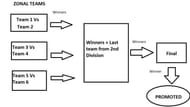
This mini-feature could be called the Stafford Cup, thus reviving another traditional Indian football cup, while maintaining a strict vigil on the number of zonal level clubs playing the 2nd division (which is currently not the case).
This kind of format protects the interest of the FSDL of having a stable closed system while giving semi-pro regional clubs to turn full-time professional.
#4 Santosh Trophy
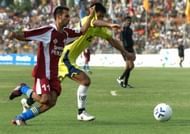
The Santosh Trophy could be turned into a biennial, well-marketed spectacle, hosted in May to cash in on the summer crowd. The tournament should have a format similar to the FIFA Confederations Cup with 8 teams vying for the title.
The year in between could be used to set up an elaborate qualifying process, with teams in each zone playing each other on a home-away basis, and these games happening during the International window to keep the local crowds, as well as players not playing for the national team engaged. The state teams could be instrumental in creating fan loyalties, with these games played in second-tier cities to attract larger crowds, and shown on local cable TV.
The Santosh Trophy is to be played once every two years. This tournament could be well marketed nationally and can involve national team players as well. This type of event helps lesser-known players make headlines, and hence earn good contracts.
Such has been the case with the likes of stars such as Ashique Kuruniyan, Rajesh S, Sahal Abdul Samad, Jithin MS, and Tirthankar Sarkar, and hence this should be considered as a good platform for talented players, and future prospects.
Possible Zones and Santosh Trophy
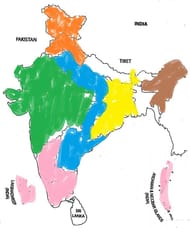
Zonal Classification (no of slots for Santosh Trophy):-
West Zone: Maharashtra, Goa, Gujarat, Rajasthan, Madhya Pradesh, Daman and Diu, Dadar and Nagar Haveli (1 + 1 qualifier) - GREEN
North-East Zone: Assam, Meghalaya, Mizoram, Manipur, Tripura, Nagaland, Arunachal Pradesh (1 + 1 Qualifier) - BROWN
South Zone: Kerala, Karnataka, Tamil Nadu, Pondicherry, Andaman and Nicobar Islands, Lakshadweep (1) - PINK
East Zone: Bengal, Bihar, Odisha, Sikkim, Jharkhand (1) - YELLOW
North Zone: Jammu and Kashmir, Punjab, Himachal Pradesh, Uttarakhand, Chandigarh (1) - ORANGE
Central Zone: Haryana, Andhra Pradesh, Telangana, Chhatisgarh, Uttar Pradesh, Delhi (1) - BLUE
Each Zone has an 8-10 team league, and State team which tops each zone qualifies along with the host state to make it 7 teams. The second-placed team from the West and North-east zones play a two-legged qualifier, and the winner of that is the 8th team in the Santosh trophy. The tournament is played with 8 teams divided into two groups, and the top 2 teams from each group qualify for the semis (same format as FIFA Confederations Cup).
#5 Youth Football
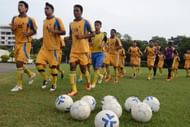
The current national youth league is pretty comprehensive and seems like a good structure. The only suggestion would be to increase the duration of the league, in order to keep young players busy in training or with games year-round. With most of the top division clubs and zonal league level clubs having a youth system set-up, that aspect has been taken care of, but can still be made mandatory as per the AIFF regulations.
Another aspect where the AIFF can improve is in terms of school level and university level football. More public grounds can be commissioned in larger cities and towns, and professional school leagues organized by state associations (much like cricket) can take place.
School football should also be given an official calendar, so as to integrate all the school level tournaments like Reliance Cup, Subroto Mukherjee cup, Khelo India School Games etc and give the children more games.
This organized calendar also allows clubs to sign players in specified windows, thus helping in creating a central registration system for youth players, as well as keeping the transfer system clean and professional. The school footballing system also makes sure that the footballers attend school, and hence ensures discipline and education among potential footballers.
Unlike schools, most decent universities have full-size playing fields and good coaches, and the AIFF must make full use of these facilities by introducing university level leagues and tournaments, which act as a direct pathway to either amateur clubs, zonal league clubs or reserve sides of the top clubs.
With the top academies of the country either affiliated to top division clubs (like Chandigarh Academy and Minerva Punjab, TATA FA and Jamshedpur FC), or with foreign clubs, youngsters picked from school or university must have a clear pathway, with the best talent given opportunities to train with the best coaches in the country or abroad. The main aim here should be to give youngsters the best training possible, in order to improve their game at a tender age.
The AIFF should also continue to stick with its baby league initiative, as it has been a huge hit so far. Top academies should also be given special funds by the AIFF, in order to sustain and remain committed. Club youth systems and other academies should be regularly given ratings, and their performance must be assessed by the AIFF and state associations on a yearly basis.
#6 National Team (Men's)
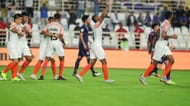
After a decent Asian Cup campaign, the national team must look to build on those performances. The International windows must be better utilised, and the team needs better exposure to friendly games. The U-23 team should also actively take part in different tournaments across the world in order to build confidence. The youth national teams have been doing a phenomenal job under the tutelage of Bibiano Fernandes and Floyd Pinto, and the AIFF must remain committed to this cause.
The new senior team coach should be able to propel the team to new heights and must be focused on the ultimate goal of reaching a world cup, or maybe the semi-finals of an Asian Cup. The team selection process must be fair, and the talent unearthed from the proposed system must come to the fore for the nation to realize this dream.
In the below segment, we discuss the possibility of Indian-Origin footballers playing for our National Team.
PIO players:

There is no doubt that Indian-Origin players playing abroad would have gone through a much better lifestyle and training, hence being more skilful. So ideally they should be drafted into the national team. But then there have been arguments about Indians being compromised of chances.
My opinion is that the federation should let these players play for the country, but by only following the Government's rule of having to stay in India for 12 months. This rigid rule separates out the really serious ones and the ones who are just trying their luck. A lot of Indian expats in the UK, UAE and Canada are willing to play for India. A lot of them like Sahal Abdul Samad and Aryn Williams are already in India to chase this dream.
In order to help out these people, the AIFF could set up a PIO slot in the top division (similar to the Vietnamese League), and giving these players a shot at the national team. While this may not be a long term fix, this will help boost our ranking in the short term and will get Indians all over the world excited about our domestic football.
There is no doubt that players of the quality of Yan Dhanda, Rajiv van la Parra and Aryn Williams would certainly help lift the game of the national team.
#7 Women's Football

Women's football has always been neglected in India, even if the women's team has a higher FIFA ranking than the men's team. The domestic structure has always been haphazard, and International activity minimal.
In order to solve this mess, it must be made mandatory for all Top division clubs to have a women's team. These women's teams must be made to participate in the current Indian Women's League (IWL), which can remain as a franchise league for the time being.
The main aim here is to give the women more games as the talent pool is not huge. Match practice is key here. The state associations must regularly hold tournaments, and the state teams must play in the national championship, as well as in the National games.
AIFF must organise more friendlies to improve the rankings and must aim to create a clear pathway for players and coaches alike. The main aim should be an Olympic qualification as of now, and World Cup qualification in the future. The team must be prepared and structure well enough to be one of the top teams in Asia.
AIFF must also focus on winning the bid for the U-20 Women's World Cup, in order to participate at the big stage, and create a core group of players for the coming 5-10 years. The immediate goal should be to break into the top 50 ranking and to have more players playing abroad professionally.
